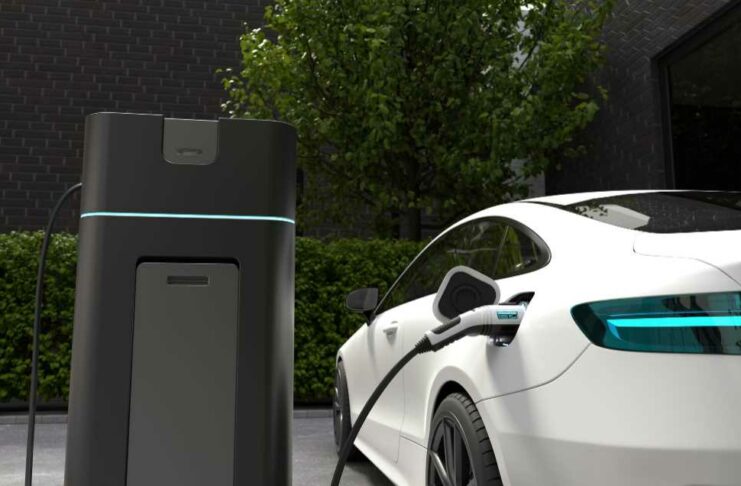The Electric Vehicle (‘EV’) industry has witnessed rapid proliferation compared to its Internal Combustion Engine (‘ICE’) counterparts in the last decade.
Government initiatives such as Ev30@30 have contributed to what we call today “The EV Revolution” of India, driving noteworthy transformation in the technologies used to power EVs and batteries in recent years.
I have encountered startups armed with groundbreaking technologies that hold the potential to shape the future of EV tech.
Advancements in battery tech
Lithium Ion Batteries (LiBs) have seen remarkable advancements in their technology over the last few years. But the heavy reliance on Lithium Ion ores has paved the way for the development of various alternative energy storage chemistries that may soon become the future of more efficient EVs.
Sodium-Ion Batteries (SiBs)
‘SiBs work like ‘LiBs’, but they use sodium instead of lithium as the mobile cations. It’s like its LiB cousin but with sodium power. SiBs have a distinct advantage in raw materials and production methods. SiB can use existing LiB production methods, allowing for rapid scalability, and making it easier to meet global demand for carbon-neutral energy storage. Interestingly, SiBs now display characteristics that rival those of Lithium iron phosphate (‘LFP’) batteries. It suggests that SiBs could even find their way into automotive applications.
Solid State Batteries (SSBs)
SSBs are becoming a game-changer in EV battery technology. It’s a battery that swaps out traditional liquid or gel-based electrolytes for solid ones.
This simple switch leads to remarkable improvements – such as heightened safety, efficiency, and durability, as well as boasting a higher energy density, resulting in storing more power within the same compact size as their older counterparts.
Major automotive industry players, like Toyota and BMW, are pouring significant resources into SSB technology advancement. The global SSB market is expected to reach ~ US$ 260.52Mn by 2028, growing at 31.8% CAGR. With these developments, we’re inching closer to a future where EVs will have longer-lasting, more efficient, and safer batteries.
Advancements in charging infrastructure
In India, we have a growing EV charging system that offers two main options: slow charging and fast charging. In plug-in charging systems for EVs, we encounter a few hurdles along the way: lack of charging infrastructure availability, long charging time for an EV compared to quick refueling of an ICE vehicle, different EV models with different plug types and charging standards, etc. Addressing these challenges is vital to ensure the smooth adoption of EVs in the future.
Wireless charging
Wireless charging is expected to revolutionize the electric vehicle charging infrastructure, presenting a convenient and hassle-free future for EV owners. Using electromagnetic inductive charging, EVs can simply park at a wireless charging pad or station, and the recharging process initiates automatically. Moreover, wireless charging systems can be designed to support bidirectional energy flow, enabling Vehicle-to-Grid (‘V2G’) capabilities.
Bidirectional charging (V2G technology)
With V2G, EVs can send energy back to the power grid, creating a two-way electricity flow. Imagine EVs not only charging up but also helping to supply electricity to the grid during peak demand periods.
This can potentially stabilize the grid, reduce energy costs, and facilitate renewable energy integration. According to the Precedence Research report, the global V2G technology market is anticipated to grow at 48% CAGR from US$ 1.77Bn (2021) to ~US$ 17.43B (2027). As these technologies continue to advance and become more widespread, they might reshape the way EVs are charged, making them more convenient and accessible.
Advancements in components tech
EVs have two key aspects: hardware and software components. The software acts as the backbone of the EV, keeping things in order and ensuring the vehicle performs at its finest. The Battery Management System (BMS) monitors temperature, charge, and battery health. Advanced features like Active Cell Balancing and Thermal Management optimize battery life.
EVs feature intelligent Motor Control Systems that calculate speed, adjust torque, and enable regenerative braking for battery recharge. V2X Technology connects vehicles and the surrounding infrastructure in real time. Predictive maintenance software integrated into the BMS alerts drivers to battery issues and aids in planning maintenance.
While the above-mentioned tech has already begun to capture the commercial market, autonomous systems are expected to shape the future of mobility. Autonomous vehicles can boost safety, lower traffic congestion, and improve energy efficiency. Autonomous cars are projected to reach US$ 62.4Mn by 2030 from US$ 20.3Mn in 2021, at a 13.3% CAGR.
In summary, EV technology buzzes with innovation and promise. The combination of efficient battery tech, components tech & charging infrastructure has the potential to reshape the way we move.




